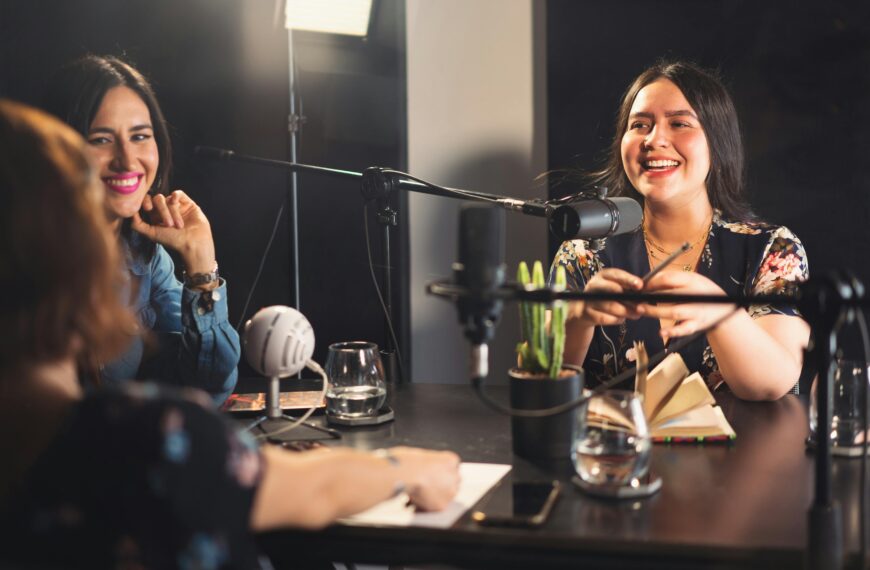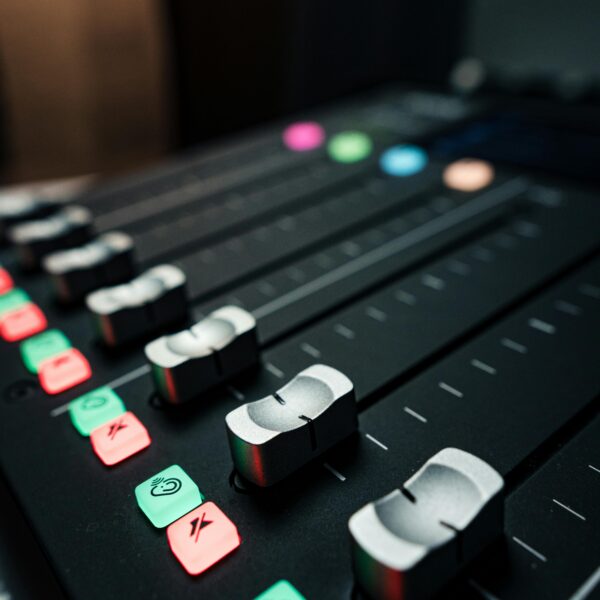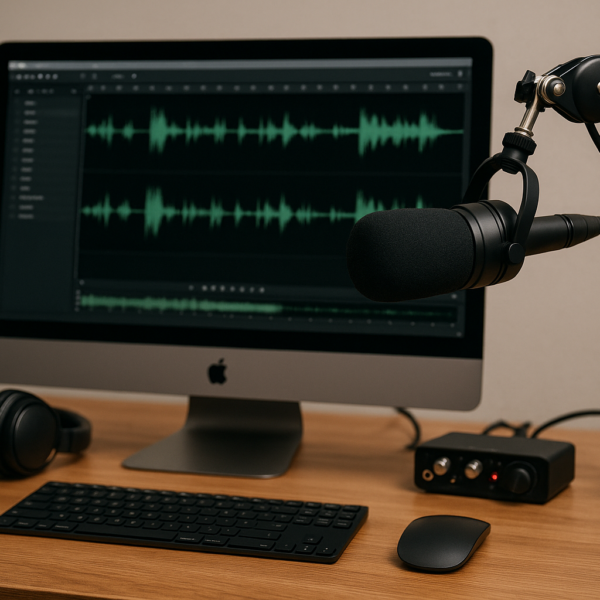In today’s age, Different types of podcasts have emerged; such as Sports Podcast, B2B podcast, True Crime Podcast and many more. B2B podcast has grown as a dominant force, infiltrating the world of B2B content and marketing strategies. Surprisingly, 18% of companies in the US have recognized this trend and are poised to integrate podcasts into their marketing strategies and it has become very important to know how to start a B2B Podcast

All you need to know about B2B podcast
What Defines a B2B Podcast?
Before the ted talk, let’s differentiate between a B2B podcast and its traditional counterpart. A B2B podcast is a branded series by businesses to engage their ideal customer base. Its primary objectives include improving brand awareness, establishing industry authority, fostering engagement, and driving conversions.
The Rise of B2B Podcasts
B2B podcasts offer a platform to establish brand persona, showcase expertise, and directly engage target audiences. The numbers speak volumes: in 2022 alone, 140 million people tuned in to podcasts every month. Clearly, podcasting are presenting opportunities if executed effectively.
In this article, we unveil the essence of B2B podcasting, its invaluable benefits and the creation process. Let’s swim deeper.
What’s the Goal of Your B2B Podcast?
Start here, not with gear. Before worrying about mics or editing software, get brutally clear on why you’re podcasting. Ask yourself: Will this show actually drive business results, or is it just noise?
When I launched my first B2B podcast, I thought downloads were everything. But the real gold? A single episode that landed us a client worth $12K. That moment flipped my mindset: fewer listeners, better conversations, bigger ROI.
So ask:
👉 How will this podcast grow my business?
👉 What do I want from it—leads, authority, brand trust?
Typical goals for B2B podcasts include thought leadership to build credibility in a niche, connecting with decision-makers in your industry, and nurturing prospects through storytelling and expertise. And these aren’t guesses—93% of B2B marketers say content like podcasts helps build trust with their audience (Content Marketing Institute).
Unlike mainstream podcasts that chase big numbers, B2B shows are laser-focused. A 300-person C-suite audience? That’s gold. You don’t need viral hits—you need the right ears. Quality of engagement beats quantity every time.
Set goals you can measure. Don’t settle for vanity metrics.
Track downloads per episode, lead conversions from podcast links, social engagement, and actual sales conversations sparked by content. According to HubSpot, businesses that track podcast-related leads see a 16% higher conversion rate on average—but only if goals are clearly defined.
If you’re just putting content out without purpose, you’re podcasting blind. Be ruthless in aligning each episode with business outcomes. I’ve axed episodes mid-production just because they didn’t tie back to my client’s goals.
Pro tip from B2B podcast strategist Jay Baer: “If your podcast doesn’t help you sell more or build deeper relationships with buyers, stop it or fix it.” 💡
So, don’t launch until your goals are written down, measurable, and tied to your business funnel. It’s not about being a podcast host. It’s about being a strategic asset to your business.
Steps to Creating a Successful B2B Podcast
We prepared a step-by-step guide to help B2B marketers build a podcast that builds brand and drives leads.
If you’re sold on starting a podcast but need some help, this is for you!
___
Step 1: Finding your why
When you’re creating your podcast’s topic/theme/pov don’t create content for the masses, instead, create more niche content for a target audience of like-minded people.
Here are some tips to niche down:
- Conduct a competitive analysis of other podcasts in your space. Include things like topics covered, show format, show type, host type, etc. (here’s a template you can use to get started)
- Think about yourself. What is unique about you either based on your experiences, career, or role now?
- Do you have strong opinions that are counter-cultural or maybe perspective not a lot of others share?
- What topics or ideas do naturally enjoy talking about with others?
Is there a target audience for that topic or point of view? - To learn more about starting a podcast with zero audience check this blog
Plan Your Content
How Should You Plan Your B2B Podcast Content?
Batch recording is a lifesaver.
When I started my podcast, I quickly realized that recording just one episode at a time left me scrambling every week. So now, I record 3–4 episodes in one go and schedule them out—less stress, more consistency.
Why does consistency matter?
Because listeners expect it. According to Podnews, 70% of subscribers drop off when episodes are delayed or inconsistent (source). If you’re doing B2B podcasting, your audience likely listens during routines—commutes, Monday coffee, or lunchtime scrolls. If you miss a beat, they’ll move on.
Weekly or monthly? Choose based on bandwidth.
If you can’t commit to weekly, do bi-weekly—but whatever you decide, stick to it. Don’t go silent without notice. I’ve seen great shows die out because they failed to plan ahead.
Build a clear editorial calendar.
Use tools like Trello, Notion, or even Google Sheets. Plan your episodes, guests, and publish dates a month in advance. I usually slot in “topic pillars” first (e.g., growth marketing, SaaS scaling, founder journeys) and then match each pillar with either a solo talk or a guest.
Not every guest is worth your time.
This is harsh, but true. I’ve interviewed folks who brought no value, just buzzwords. Since then, I’ve started vetting each guest based on relevance to my niche and what real questions my audience is asking. Use LinkedIn polls, Reddit threads, or Quora to dig up those burning B2B pain points.
Review what works—often.
I check performance weekly via Spotify for Podcasters and Apple Analytics. Look for spikes: What episodes got shared the most? Where did drop-offs happen? I once noticed that my solo episodes on pricing models outperformed big-name guests—surprising, but valuable insight.
Publishing whenever you believe it will have a detrimental effect on your download numbers over time. If you having difficulties managing schedule, get a Virtual Assistant.
Bottom line? Have a plan, stick to a schedule, and track what hits.
No fluff, no guessing. The best B2B podcasts are built on reliability, clarity, and audience obsession. 🎯
Step 2: Deciding on a podcast style and format
Some options to chose from:
- Interview-Style
- Journalistic Style
- Solo-style
- Audio + Video
- In-Person
- Figure out your podcast Format, will it be two person podcasting, three person or more?
Step 3: Buying your equipment
You don’t need to have a crazy setup to achieve good-quality audio.
Here’s the equipment I recommend to get you started:
That’s it – A good combo and you can go way cheaper than that if you want. Check our website soundorp.com/equipments to explore more
If you want video, try the Logitech Brio 4K Webcam. Its ~$170.
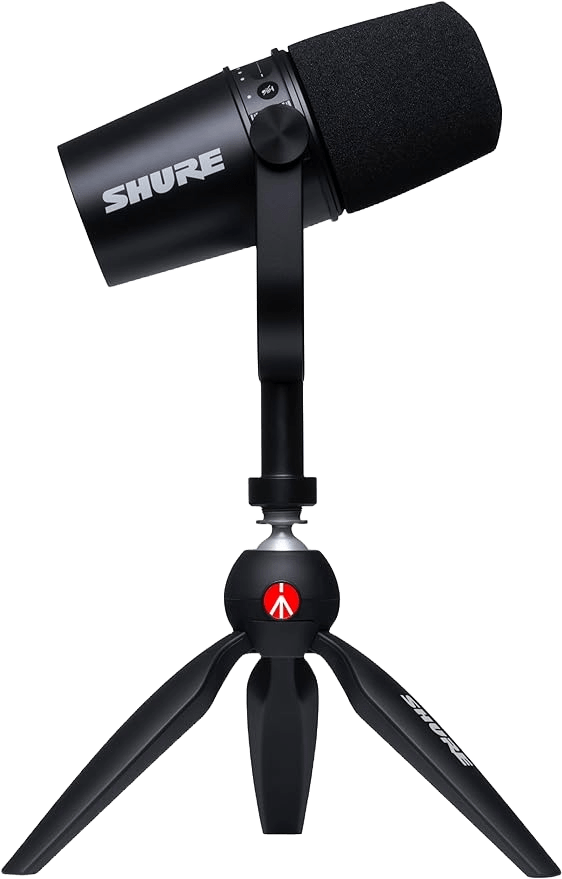
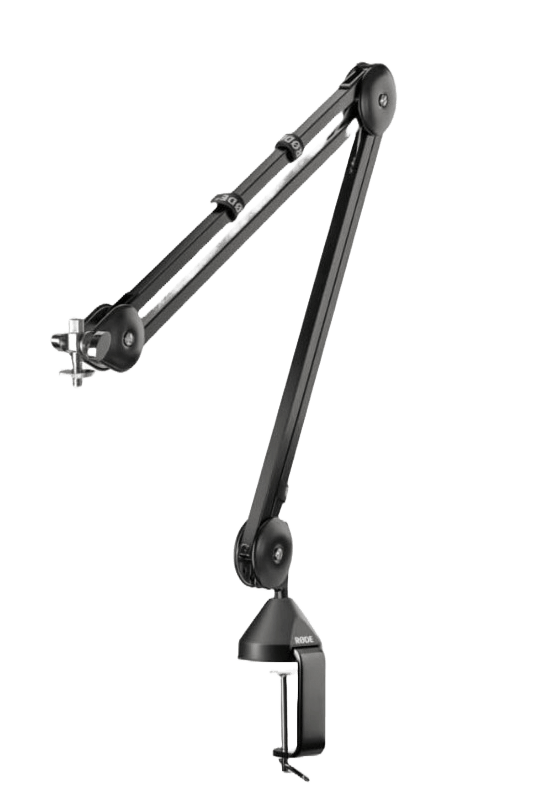
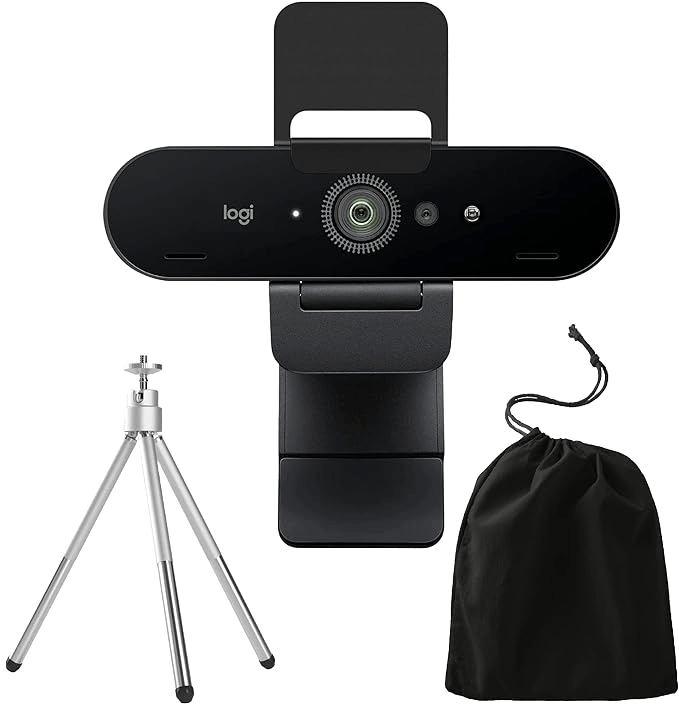
Step 4: Analyze Your Competitors
Understanding what your competitors are doing can provide insights and help you carve out a niche for your podcast. Analyze their shows by:
- Listening to their podcast episodes.
- Subscribing to their newsletters.
- Following their social media profiles.
Identify gaps or opportunities in their content that your podcast can fill. This competitive analysis can help you refine your content strategy and ensure you offer something different and valuable.
Step 5: Understand Your Target Audience
Start ultra-specific. Unlike B2C shows, a B2B podcast thrives when it speaks to a tight, clearly defined group. Don’t say “real estate companies”—say “mid-sized commercial real estate firms struggling with lease automation in the Midwest.”
The narrower the niche, the louder your message hits. I once worked with a SaaS podcast that went from 80 to 2,700 monthly listeners by shifting from “startups” to “fintech founders with under 20 employees.”
Use list stacking to your advantage. It’s not just a fancy trick—it’s a targeting framework where you combine multiple filters like industry + job title + company size + pain point to get hyper-relevant.
Instead of targeting “marketing directors,” go after “B2B SaaS CMOs with stagnant MQL pipelines.” As B2B podcast strategist Jeremy Enns says, “You don’t want a bigger audience. You want a deeper one.”
If you’re unsure who to focus on, look at your current clients.
What roles do they hold? What keywords keep showing up in your email convos?
Which LinkedIn posts are getting the most saves?
That’s your data goldmine.
According to HubSpot, 68% of B2B marketers say their most effective content is personalized (source: HubSpot)—yet most podcasts sound like they’re talking to everyone.
When I started my own show, I made the classic mistake of going too broad. I said it was “for creators.” Turns out, creators don’t pay for services—startups do.
Once I rebranded it as “for bootstrapped B2B founders building authority through audio,” my leads tripled in 3 months.
Don’t try to serve everyone. You’ll end up serving no one. Better to be a must-listen for 500 people than background noise for 5,000.
Step 6: Guest outreach and scheduling
This is a part a lot of podcasters over think early on.
It is recommended just thinking about who you would want to hear from and reaching out with a message that looks like this:
Hey [Name] – big fan of what you are doing at [work].
I’m hosting a podcast called Demand Gen chat.
Would love ot have you on to deep-dive into some succesful tactics
Interested?
Then get it booked if they say yes!
Step 7: Recording
If you’re doing a solo show there’s no problem using your computer’s native recording software.
If you’re bootstrapping a show with guests zoom works but the quality is really low. Its not built for great audio, its built for great conferencing.
Step 8: Editing
We use Descript as our editing software for all podcast video and audio editing.
What’s amazing about the Descript/Riverside combination is that they integrate, so you don’t have to download any files. You may just export from Riverside to Descript.
I could create a whole article on how to utilize Descript and correctly edit a podcast. However, these are some of the most common mistakes I find people making:
- They don’t edit at all. They upload the conversation back-to-front. That’s a great way to kill your retention rates.
- They just do a side-by-side of the host and the guest. This is not engaging when you’re trying to listen to what the guest is trying to say if the host is doing something distracting.
- Not editing your audio. Bad audio is not an excuse, especially in the age of artificial intelligence. I utilize Descript’s Studio Sound tool to increase our audio quality, and it’s fantastic; I’d consider it worth the price of Descript alone. I simply turn it on, and it employs AI processing to make it appear as if we spent too much money on audio equipment.
They make the outro too long
People smell an outro a mile away. And they’ll stop listening immediately, impacting your average percentage listened. Instead, make the transition quick and seamless.
They don’t shorten the gaps of silence
Descript includes a feature that allows me to erase word gaps for up to a certain duration. Any gap of 1.5 seconds or longer is automatically reduced to 1 second (this can save me 3-5 minutes of time over the course of a 45-minute conversation!)
They overly produce intros and outros
This is my personal preference, and I stand by it. The introduction should promise the value you’ll gain from the episode. It shouldn’t be over the top. The shift from the introduction to the actual material should feel natural.
They record an intro before they’ve interviewed the person
Instead, record it right after you’ve finished the session, when you’re wearing the same clothes and the content is fresh in your mind.
They ask for reviews instead of ratings
Writing a review can be intimidating. Instead, request a five-star rating. Anyone can listen to your podcast, rate it five stars, and move on with their lives. And if they want to leave a review while they’re there, even better.
However, If you want your editings out of the box and eye catching you might want to approach the professionals
Here’s are the biggest mistakes people make editing podcasts:
- They don’t edit at all.
- They just do a side-by-side of the host and the guest
- Not enhancing your audio.
- They don’t shorten the gaps of silence.
- They overly produce intros and outros.
- They record an intro before they’ve interviewed the person.
- They ask for reviews instead of ratings.
- They make the outro too long.
Step 9: Distribution & Publication
When your recording is ready for publishing, upload it to your podcast provider for distribution.
When you sign up with a podcast host for your B2B podcast, it generates a unique RSS feed containing all crucial details—episode metadata, descriptions, and media links. This feed acts like a digital pipeline, instantly updating platforms like Spotify, Apple Podcasts, and Google Podcasts whenever you upload a new episode.
I remember when I first launched my podcast, I assumed simply uploading it to Spotify would do the trick. Little did I know, a podcast host was the real game-changer behind smooth distribution.
In fact, according to a 2023 report by Buzzsprout, over 80% of successful podcasters credit their host’s automated RSS syndication for expanding their reach (source: Buzzsprout Podcast Statistics).
However, not all podcast hosts are created equal. Some limit storage, charge high fees, or restrict analytics, making it frustrating for podcasters aiming for growth. A study by Podnews found that 64% of podcasters switch hosts due to poor analytics, slow uploads, or hidden costs (source: Podnews Research).
That’s why choosing the right host—one that offers detailed insights, unlimited storage, and fast distribution—can be the difference between a thriving show and one lost in the noise.
And let’s be honest—bad hosting experiences can be a nightmare. Imagine uploading your latest episode, only to find out that the audio is distorted due to low bandwidth from your hosting provider.
Or worse, your RSS feed isn’t updating, leaving your audience hanging. A great podcast host isn’t just storage—it’s the lifeline of your brand’s voice. 🎙✨
In addition to the major listening platforms, you might also want to post your podcast straight to your brand website.
We prefer hosting podcast on podbean.
Here’s other ways you can distribute:
- Create professional-looking audiograms
- Get a transcript
- Upload to YouTube
- Create a landing page for each episode
- Release on a schedule
- Use your transcript to grab tidbits for linkedin, reddit, and twitter.
- We have made a list of 21 tools and platforms to boost up your productivity and save time. Check them out!!
Step 10: Promotion & Marketing
For maximum exposure, you’ll need to implement a marketing and promotion strategy so your podcast reaches the right ears. This could involve:
- Sharing sample clips on social media.
- Sending promotional messages through email
- Repurposing your audio content into blog posts
- Refine and optimize your podcast’s SEO for maximum exposure.
- Create a presence on social media that goes beyond marketing your podcast and engages directly with your listeners.
Step 11: Integrate Your Podcast with Your Company Website
You don’t need a separate website for your podcast. Instead, integrate it into your existing company website. Create a dedicated section that includes:
- Information about the podcast and its hosts.
- The purpose of the podcast and how it aligns with your business goals.
- Links to your social media profiles and major podcast platforms.
- A list of episodes, each with its own page containing a media player, show notes, and full transcripts.
This integration not only boosts your site’s SEO but also makes your content more accessible and professional.
Step 12: Leverage Existing Promotion Channels
Your B2B podcast isn’t just content—it’s a lead-gen machine and a trust-building tool. But none of that works if nobody hears it. So, let’s amplify its reach using what you already have.
Share on Your Company’s Social Media
Every time an episode drops, don’t just post a link—tell a story.
When I promoted our first B2B episode on LinkedIn, I pulled out a quote from the guest that hit hard and added a personal note about why it mattered. Engagement doubled.
Use bold hooks, tag guests, and use hashtags that your target audience follows. 📈 On Twitter/X, try short threads breaking down the value. On Instagram, clip powerful moments into Reels or add polls in Stories to start convos. For LinkedIn, long-form posts or carousels perform best for B2B.
According to Sprout Social, social posts with guest tags and visuals get 40% more engagement than plain text links source.
Turn Your Newsletter into a Promo Engine
Your newsletter list is your warmest audience—so tap into it.
Add a featured podcast section in every issue. I usually include a one-liner takeaway, a quote that sparks curiosity, and a CTA to listen. It makes the newsletter feel like a resource, not just a promo piece.
If you’ve got drip sequences or onboarding emails, sneak in podcast episodes that align with the reader’s journey. For example, if someone just joined your SaaS trial, link them to the episode where your CTO shares the vision behind the tech. 🔥
HubSpot reports that email subscribers are 3x more likely to engage with podcasts when personalized links are added source.
Repurpose Content into Blogs and Videos
SEO loves your podcast—but only if it’s in the right format.
I turn every episode into a blog post, sometimes using ChatGPT to help outline the structure fast. Then I embed the episode, write a keyword-rich summary, and add value that wasn’t in the audio. That boosts search rankings and gives Google something to index.
If we record video, it goes on YouTube. Sometimes I break it into 5-6 mini clips and schedule them weekly. According to Wistia, video content increases time-on-site by 2.6x, which is huge for rankings source.
But here’s a quick heads-up—don’t rely solely on AI transcripts for blog conversion. They’re often clunky. Always rewrite and polish the content for humans.
Build Dedicated Podcast Channels
Eventually, I realized posting everywhere but owning nothing was costing us loyal listeners.
So I launched a separate newsletter just for podcast fans. It’s casual, behind-the-scenes, and filled with early access drops. Open rates went from 18% to 42%.
You might also want to create standalone social pages for your podcast. This way, it doesn’t get drowned in your company feed. Especially helpful when your podcast voice is different from your brand tone.
One risk? Splitting your audience. That’s why I always promote new channels first inside the existing ones, then slowly transition.
Podcast expert Lindsay Tjepkema once said, “Your podcast isn’t just a show—it’s a content flywheel.” And she’s right. The more angles you use to promote it, the more momentum you build.
Step 13: Be Cautious with Sponsorships
As your podcast grows, you may attract interest from advertisers who want to sponsor your show. While sponsorships can help reduce your expenses, it’s important to consider their impact on your listeners. B2B audiences, in particular, may find ads troublesome, especially if they’re tuning in for valuable insights and industry knowledge.
Focus on Converting Listeners to Customers
Instead of traditional sponsorships, prioritize content that drives listeners to engage with your company directly. Highlight your company’s expertise, share success stories, and provide actionable insights that demonstrate the value of your products or services. This approach builds trust and encourages listeners to become customers.
Step 14: Finish Each Episode with a Call-to-Action
Ending each episode with a strong call-to-action (CTA) is essential for encouraging further engagement. A well-crafted CTA can guide your listeners towards taking the next step in their journey with your brand.
Examples of Effective CTAs
- Visit Your Website: Encourage listeners to visit your website for additional resources, such as whitepapers, case studies, or blog posts.
- Sign Up for a Webinar: Promote upcoming webinars or live events that offer deeper dives into topics discussed in the podcast.
- Engage on Social Media: Ask listeners to share their thoughts on your latest episode on your LinkedIn post or Twitter thread.
- Leave a Rating and Review: Request listeners to rate and review your podcast on their preferred platform. Positive reviews can enhance your podcast’s visibility and credibility.
Step 15: Publish Consistently
Consistency is key to building and maintaining a loyal audience. Establish a regular publishing schedule that you can realistically maintain. This not only helps retain your current listeners but also attracts new ones who value reliability in content delivery.
Start Slow and Scale Up
If you’re new to podcasting, it’s advisable to start with a manageable publishing frequency, such as bi-weekly or monthly. As you gain experience and streamline your production process, you can increase the frequency to weekly episodes. Ensure that each episode maintains high quality, as consistency in quality is just as important as consistency in scheduling.
Step 16: Takeaways for Starting a B2B Podcast
Launching a B2B podcast can be a highly effective strategy for establishing thought leadership and can build deeper connections with your audience, and driving business growth. Here are the key takeaways to ensure your podcast’s success:
Leverage Existing Promotion Channels: Utilize your company’s social media profiles, newsletter, and blog to promote your podcast. Create dedicated channels for focused engagement.
Be Cautious with Sponsorships: Prioritize content that converts listeners into customers over traditional sponsorships.
Finish Each Episode with a Call-to-Action: Guide your listeners towards meaningful actions that deepen their relationship with your brand.
Publish Consistently: Maintain a regular publishing schedule to build and retain a loyal audience.
By following these steps and strategies, you can create a B2B podcast that not only enhances your brand’s authority but also drives meaningful engagement and business opportunities. Embrace the journey of podcasting, stay committed to providing value to your listeners, and watch as your efforts transform into tangible business results.
Examples of Great B2B Podcasts
If you’re looking for inspiration for what works, don’t worry; there are many successful B2B podcasts out there. Here are some of the greatest options we’ve found
Example 1: Escape Your Limits
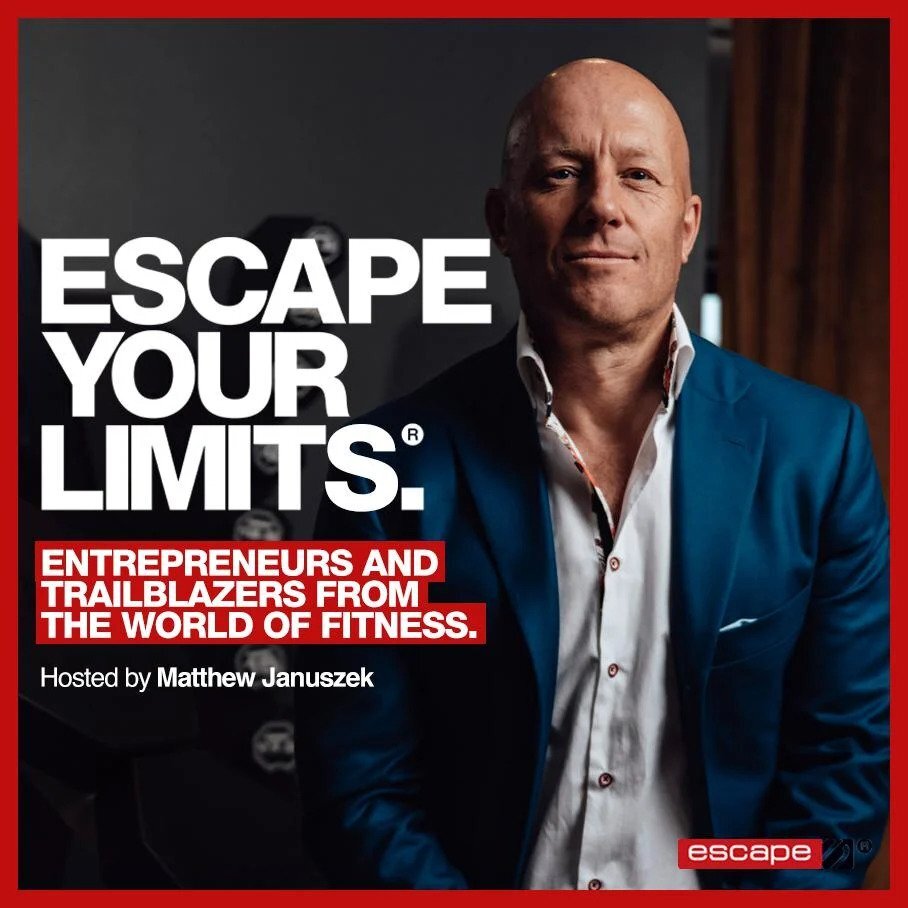
Host Matthew Januszek interviews top leaders in health and fitness to learn what motivates their success. Each participant has the opportunity to discuss their motivation and how they have converted their aspirations into reality. Not only inspirational, but also thought-provoking.
Example 2: The Tech Marketing Podcast
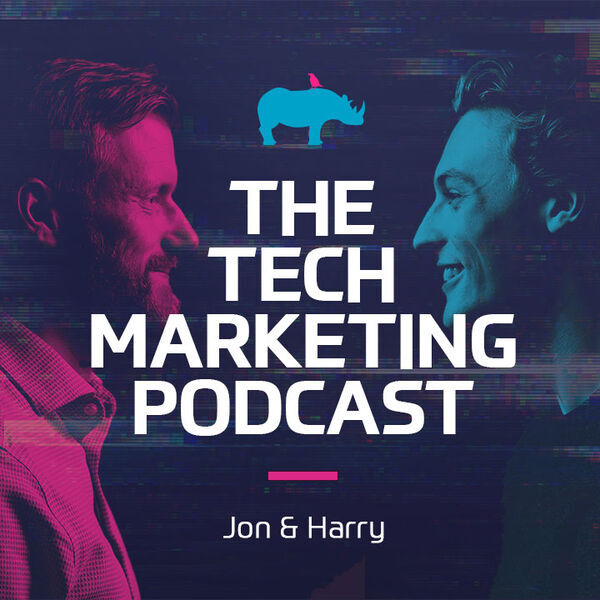
Brainstorming the tech marketing landscape are CTO (Chief Technology Officer) Jon Busby and Audio Producer Harry Radcliffe. This B2B podcast features Q&As, tips on strategy planning and the latest financial trends.
Example 3: The Rework Podcast
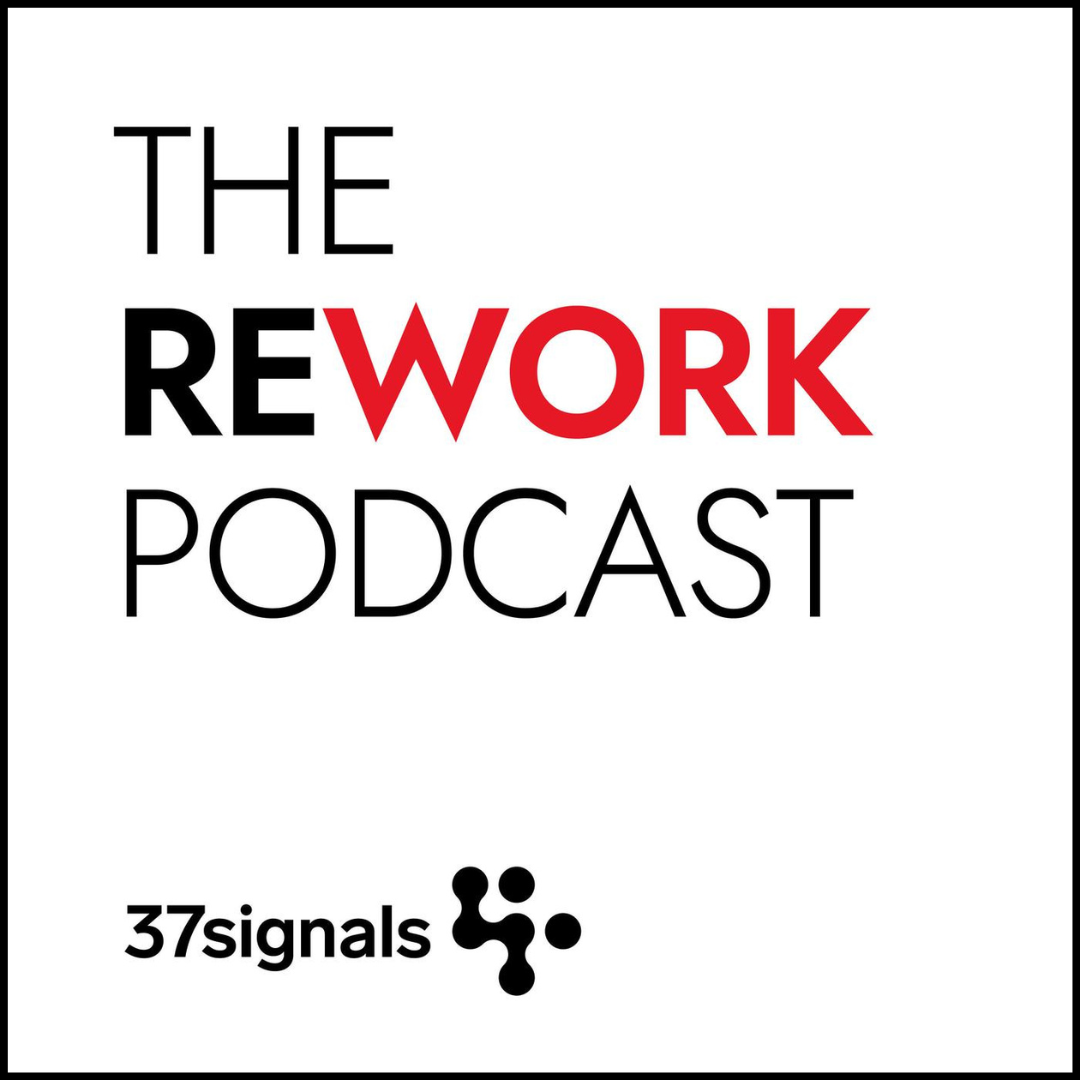
The Rework teaches you how to operate your business in an efficient and productive manner. This 37signals video delves into the book ‘Rework’ by Jason Fried and David Heinemeier Hansson. The writers provide chapter-by-chapter examination of how the business environment has altered since its publication.
FAQs on B2B podcasts
Is Podcasting the Future of B2B Marketing?
B2B podcasts may help you give your brand a voice, humanize your company, and establish your knowledge in your area or industry. This is all critical for increasing brand awareness among existing and new customers. From brand awareness to deepening audience engagement, podcasts offer a stack of opportunities for businesses to boost em up in the digital landscape.
How frequently should I release episodes for my B2B podcast?
Similar to episode length, there’s no one-size-fits-all answer. The key is consistency. Determine a schedule that you can realistically maintain, whether it’s weekly, bi-weekly, or monthly. Consistent releases help build anticipation and keep your audience engaged.
How do I promote my B2B podcast?
Promotion is essential for growing your podcast’s audience. Utilize your existing marketing channels, such as email newsletters, social media platforms, and your company website, to announce new episodes and encourage subscriptions. Collaborate with guests or other podcasts for cross-promotion opportunities.
What topics should I cover on my B2B podcast?
Choose topics that line up with your business’s expertise and interests of your target audience. Consider addressing industry trends, best practices, case studies, or interviews with thought leaders. Regularly solicit feedback from your audience to ensure your content remains relevant and valuable.
How do I measure the success of my B2B podcast?
Success metrics for podcasts can vary depending on your goals. Track key performance indicators (KPIs) such as downloads, listener engagement (e.g., comments, reviews), website traffic driven by your podcast, and conversion rates for any associated offers or products.
How do I monetize my B2B podcast?
Monetization strategies for B2B podcasts include sponsorships, affiliate marketing, offering premium content or services, and generating leads for your business. As your audience grows, explore opportunities to collaborate with relevant brands or businesses for sponsored content or advertisements.
How long should a B2B podcast be?
There’s no set or ideal length for any kind of content. A good starting point is to look at how long other podcasts are in your field. This gives you an idea of what kinds of episodes are popular amongst listeners. Most podcasts are over 30 minutes, but there’s no point in creating a long podcast if you’re just going to ramble.
How many subscribers do you need for a successful podcast?
First, you need to ask yourself: how are we calculating success? If you’re looking at podcast profitability, it’s not always about big audience numbers. If you’re able to develop a captive and niche listener base, you’ll probably still be able to secure lucrative partnerships and sponsorships.
Additionally, seeing higher customer engagement and high sales could indicate that your podcast is doing more work than you thought.
Conclusion
In conclusion, B2B podcasting represents a paradigm shift in marketing strategies, offering businesses a platform to amplify brand identity, engage audiences, and drive discussions.
Get your complete podcast equipment setup by visiting Podcast Equipment Bundle. Get in touch with podcasting services and experts those will save you tons of time at Podcast Production Services.
With that being said, Let’s connect with all such free and paid tool/services you might need knowingly or unknowingly to fuel your growth. Here’s 21 BEST AI TOOLS AND PLATFORMS TO GROW YOUR PODCAST AND CONTENTS. There are some bonus tools in the end too to make your day to day life easier.
There are some affiliate links on this page that will redirect you directly to the original products and services. Also by buying through those links you will be supporting us. So thank you ^.^
